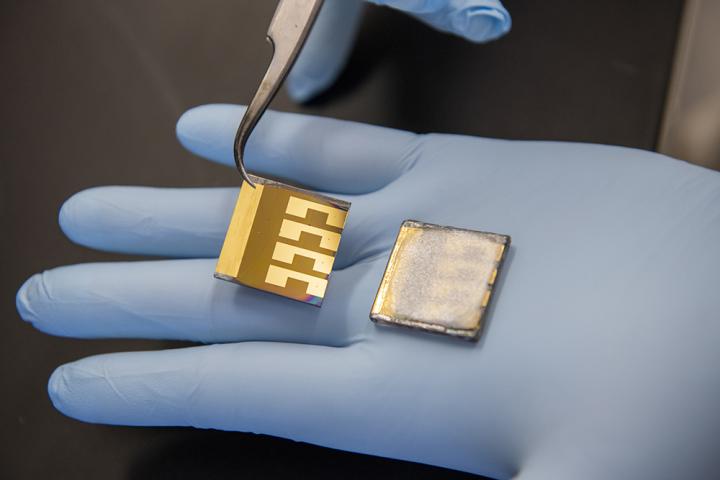While researchers around the globe try to develop lead-free perovskite solar cells, a research team from the U.S. Department of Energy’s National Renewable Energy Laboratory (NREL) has come up with a technique to dramatically reduce lead leakage in such devices.
The NREL team said the innovation is vital given the potential threat to public health if lead leaks from building-integrated PV installations.
The scientists claim to have addressed the risk by applying a lead-absorbing film to the front and rear of a perovskite cell. “Under conditions of severe solar cell damage in a lab setting, the lead-absorbing films sequestered 96% of lead leakage,” the NREL group said.
Films
A transparent molecular film containing phosphonic acid groups which bind strongly to lead was used for the glass side of the front-side, transparent conducting electrode, the researchers explained in the paper On-device lead sequestration for perovskite solar cells, published in Nature. On the rear electrode side of the cell, a polymer film blended with lead-bonding agents was used.
“The lead-absorbing films on both sides swell to absorb the lead rather than dissolve when subjected to water soaking, thus retaining structural integrity for easy collection of lead after damage,” stated the paper.
The NREL group said their experiment included damaging the front-side glass of 2.5×2.5cm cells by hammering and shattering as well as scratching the rear side with a razor blade. The damaged cells were then submerged in water. “The films can absorb the vast majority of the lead in severely damaged cells due to water ingress,” said the researchers.
Lead and perovskites
While the leaching of lead in traditional crystalline silicon modules is considered a minor concern because it occurs in trace amounts, the recent popularity of lead-heavy perovskites – which are expected to enter mass production within two years – has potentially more significant ramifications for the solar industry.
Lead in c-Si modules
In recent months, Scientists from Purdue University in the United States have unveiled organic-inorganic hybrid perovskite materials said to improve the thermal stability of perovskite cells without lead. Researchers from South Korea’s Ulsan National Institute of Science and Technology claim to have identified a tin-based perovskite they say could open possibilities for the application of lead-free perovskites in solar cells.
This content is protected by copyright and may not be reused. If you want to cooperate with us and would like to reuse some of our content, please contact: editors@pv-magazine.com.




2 comments
By submitting this form you agree to pv magazine using your data for the purposes of publishing your comment.
Your personal data will only be disclosed or otherwise transmitted to third parties for the purposes of spam filtering or if this is necessary for technical maintenance of the website. Any other transfer to third parties will not take place unless this is justified on the basis of applicable data protection regulations or if pv magazine is legally obliged to do so.
You may revoke this consent at any time with effect for the future, in which case your personal data will be deleted immediately. Otherwise, your data will be deleted if pv magazine has processed your request or the purpose of data storage is fulfilled.
Further information on data privacy can be found in our Data Protection Policy.